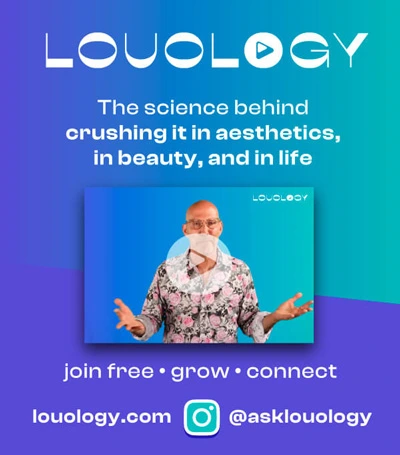Why Estheticians Should Consider Adding Cosmetic Lasers to their Practices

In 2004, when Botox had been on the market only a couple of years and I myself was a pioneer in the medical aesthetics training industry, traveling around the country speaking about the growing trend of cosmetic lasers, I always asked estheticians the same question: How many of you have considered adding cosmetic lasers to your practice? Back then, in a room averaging twenty people, no more than one person would typically raise her or his hand. That’s because most estheticians were more focused on facials, chemical peels, microdermabrasion, and micro facials.
Fast forward to 2019: I still ask that question and so do my staff members who represent me, but today’s response is vastly different. Are you ready for this? Out of twenty estheticians, we now see twenty hands—in other words, 100 percent of estheticians are now at least considering adding in cosmetic lasers. Even those who haven’t yet completed esthetics school are already planning to continue their education in cosmetic lasers once they’ve graduated. So, how have cosmetic lasers gone from practically zero interest among estheticians to 100 percent?
What Has Changed?
So much has changed in the medical aesthetics industry in fifteen relatively short years. Improved technology and a competitive marketplace have made laser hair removal, laser tattoo removal, anti-aging and intense pulsed light (IPL), and body contouring treatments much more effective, comfortable, and affordable. Facials and peels can offer amazing results but technology truly is in a world of its own. And because consumer demand is at an all-time high, cosmetic laser employment opportunities are, too.
A Perfect Marriage
The good news is, estheticians don’t have to choose between traditional facials and cosmetic lasers; they can easily do both. It really is the perfect marriage. It’s very likely to have a client who comes in for a facial and also has a skin condition (hyperpigmentation, aging, skin tags, unwanted tattoos, etc.) that needs a more aggressive treatment to achieve optimal results. Another scenario is the wax/laser hair removal combination: Consumers used to wax all unwanted hair but now, most choose to wax some parts and laser others for more permanent results.
If you are also a certified laser technician, you can offer in-demand services like radiofrequency (RF) skin rejuvenation for improved texture, tone, and tightening; IPL for skin rejuvenation; and lasers that go deeper for skin resurfacing. Many laser treatments can be enhanced by facials, and vice versa.
Want more reasons to add-in cosmetic lasers? Keep reading:
- You can help your clients achieve results that go beyond facials and peels.
- You’ll have an entire arsenal of services that consumers want (which means you can dramatically improve your bottom line).
- For the client who needs a more aggressive treatment, you won’t lose him or her to the cosmetic laser technician down the street. You’re now a one-stop shop.
- You can introduce higher ticket services that require less time (for example, in addition to a facial that costs $80 for one hour, you can offer a photo facial for $250 and it takes just 20 minutes).
- You’ll often see immediate results on your clients (and they will thank you).
- You can work on additional body parts with services such as body contouring (something you’re more limited with on a service such as microdermabrasion)
And My Favorite Reason for Adding-In Cosmetic Lasers:
- Personal growth.
Every successful business owner knows that the key to success in any industry is to never stop learning and growing. British actor Craig Charles said it best: “It’s evolve or die, really, you have to evolve…otherwise it just becomes stagnant.”
Think of it this way: Amazon started out selling just books and grew into the world’s largest online retailer. What doesn’t Amazon sell? And what about surgeons who are always adding new procedures based on the latest medical findings? Or, hair colorists who consistently learn new techniques to keep up with what’s popular? And of course, Apple, which started out with the Mac desktop and has since added the iPhone, iPad, iPod, and the Apple Watch. The idea is to stay within the same industry but “go to where it’s at,” not investing too much in short-lived trends but at the same time, understanding and embracing the future.
But What If??
These days, I rarely hear objections from estheticians regarding the idea of adding cosmetic lasers to their practices. But if I do, it’s typically one of two things—either they have questions about the safety of cosmetic lasers, or they’re concerned that lasers are just for the age forty-plus market, and they’ll be somewhat limited to that demographic. Let’s look at both of those.
When estheticians ask me, “Aren’t cosmetic lasers potentially dangerous? What if I burn someone?” I commend them for asking. It’s a valid concern and the answer is yes, they can be very dangerous in the wrong hands. That’s why proper training is absolutely essential. You’ll hear people in the industry say, “You can just train on the job and you’ll figure it out—or, the laser company can give you a ten-minute tutorial.” To that, I say—at what cost? There is no room for error when operating a cosmetic laser. If you’re going to do it, do it right. Get proper training and I promise you, you’ll sleep better at night for doing so.
As far as lasers being just for the age forty-plus market, I get that concern, too. While there’s money in it, zapping age spots all day long isn’t particularly fun or creative. But there are so many different types of treatments you can offer now to all age groups. From acne treatments to body contouring, tattoo removal, and laser hair removal, rest assured that your treatment room can be filled with all ages and genders.
When it comes down to it, most of us in the esthetics industry got into it in the first place because we’re passionate about using our knowledge and skills to help others look and feel more beautiful. There’s a real reward in being able to do that. Whether you’re providing a skin-brightening facial to a new mom who desperately needs some TLC or helping a teenager dramatically improve her self-esteem with acne-busting IPL treatments—you’re still doing what you set out to do.
Keep evolving. Stay passionate.
Think this article is interesting? Share it with a friend!
Louis “The Laser Guy” Silberman is CEO of National Laser Institute, a national cosmetic laser and medical esthetic training center founded a decade ago, and owns medical spas in Scottsdale and Dallas. He’s the author of Make It Happen Online and a motivational marketing speaker. Silberman created the sixth most visited health/beauty website and was a semi-finalist for the Ernst & Young Entrepreneur of the Year Award 2014. Contact him at louis@nationallaserinstitute.com.








